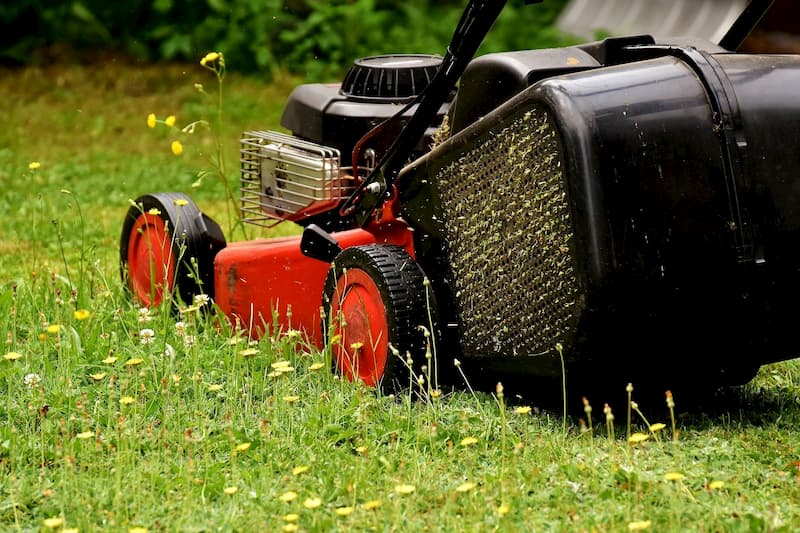Top 10 Lawn Problems and How to Fix Them
A beautiful, lush lawn is the desire of most homeowners and it’s more than just a backdrop for family outdoor time – it’s really a playground where precious memories are made. Unfortunately, nothing ruins the party more than bald patches, yellow spots and weeds.
Having a gorgeous lawn means you’ll have to invest your time and effort in it but still, many things can go wrong. Many homeowners either overwater, use too much fertilizer or fail to understand that different types of grass require different mowing heights and care.
Fortunately, with the right tips and practices, many lawn issues can be easily fixed.
Weeds
Weeds are the curse of every yard and there’s no use in slacking once they start poking through. Regular yard and lawn maintenance is crucial as well as regular weed control practice that includes pre and post-emergent treatments all year round. This will help keep the weedy nuisance out of your yard and keep your lawn looking its best.
Too Much Shade
Sun, water and air are three things all plants need to grow. If there’s not enough sunlight, plants can’t photosynthesize so it’s important to minimize shaded areas. Trim the bushes and branches around trees and grow shade-resilient types of grass and plants to ensure your yard looks green and lush.
Watering
A typical homeowners’ mistake is over-watering which can suffocate grass roots and cause fungal infections as well as attract invasive creatures and insects. There’s also the problem of under-watering that can cause your lawn to deteriorate and become more susceptible to pests and weeds.
It’s necessary to know the type of soil you have and what is the best approach to take as different soil types require different care and watering. For instance, sandy soil needs a lot of water whereas clay soil needs it much less.
Compacted Soil
In time, the soil beneath most lawns hardens and becomes compacted, especially if there’s high foot traffic. The problem with compacted soil is that it doesn’t let in air, water and fertilizer to penetrate the root system which then weakens the grass and allows weeds to spread.
Dealing with compacted soil isn’t very complicated – staying off wet lawns, aeration and if the condition does persist, turning to professionals for help.
Bare Spots
Bare patches are an eyesore whether they happen due to lawn disease or simply high traffic. Fortunately, there’s an easy, three-step fix: dig up the spot a few inches wider, till and rake the area lightly and add topsoil with a patch repairing blend.
Animal Damage
Proper lawn care is the key in dealing with damage created by moles, skunks and raccoons. Regular maintenance will keep your lawn soil healthy and balanced which will make it less desirable for critters to dig up looking for worms and grubs.
If the culprit is your pet who causes yellow spots on your lawn from urine, the solution is diluting those spots to neutralize the nitrogen. Also, encourage/teach your pets to do their business only in one place, if possible.
Lawn Diseases
Fighting lawn diseases is a challenging task as it often takes a while before you start seeing positive results. Most diseases are fungal and occur because of overwatering – homeowners usually think that patches of dying grass happen because of lack of water. However, the solution isn’t watering but rather the right lawn treatment designed for a specific fungus.
Lawn Pests
Whereas most insects won’t harm your lawn, certain types can grow in your yard and cause serious damage. These lawn pests aren’t only harmful to your landscape, but can also hurt your pets and family. It’s recommended you apply lawn treatments aimed at pest control and thus keep your lawn pest-free and safe for your family.
Moss
Lawns that are compact, shady, wet and under-fertilized are easily overtaken by moss but it only takes a few simple steps to get rid of it. Prune your trees regularly to decrease the amount of shade and allow grass to grow, aerate and dethatch to relieve compacted soil, till the ground in thinner areas and overseed it with shade-resistant grass. Also, monitor your watering as well as the pH levels of the soil.
Inadequate Mowing
In addition to all of the above, poor mowing practices can also cause lawn problems, in particular, mowing with a dull blade. Such blades rip the top of the grass and damage it so it’s more susceptible to disease. This is why it’s important to ensure the blades are sharp so your grass can heal faster and be more resilient.
Basic lawn maintenance that includes proper fertilizing, watering and mowing can help you keep your lawn in pristine condition. With the tips listed here, you’ll be sure to spot any problems early on, eliminate them successfully and enjoy your time in the yard of your dreams!

